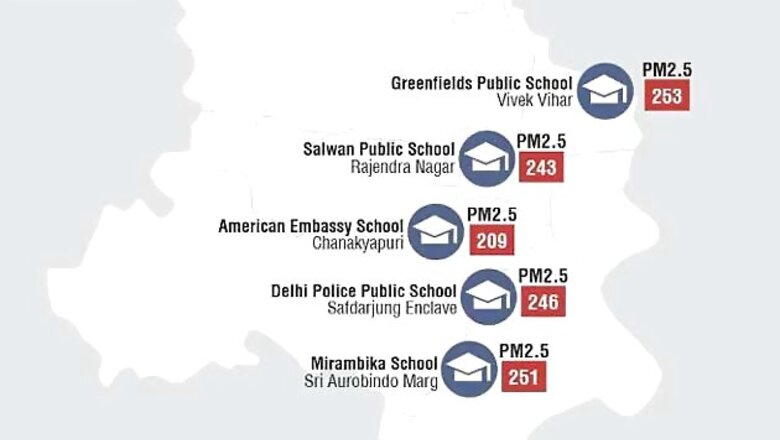
views
New Delhi: In a major revelation, a survey by Greenpeace conducted inside five prominent schools across Delhi found that the air quality there is extremely unhealthy. The survey claimed that the particulate matter 2.5 (PM2.5) levels were found to be four times the safety limits prescribed in India and 10 times as prescribed by the World Health Organisation.
According to the WHO, air pollution impacts the most vulnerable sections of the population and children are among the worst hit. Studies by US Environmental Protection Agency (USEPA) have concluded that exposure to PM2.5 in children will mean reduced lung functioning, increase in asthma and respiratory illnesses. The International Agency for Research on Cancer classified particulate matter pollution as carcinogenic to humans in 2013. Furthermore, it was also designated as a "leading environmental cause of cancer deaths".
In the winter season in 2015, Delhiites witnessed several bad-air days with the Air Quality Index averaging at critical pollution levels. Expressing concern over the rising trend in the pollution levels, Dr Vikram Jaggi, Director of Asthma and Allergy Centres said, "The winter of 2014 has particularly been a bad one for the asthmatics, the consistency in the smog resulted in an increased number of asthma cases for almost a period of three months."
"This establishes the fact that air pollution levels inside Delhi's schools are alarmingly high and that children are consistently breathing bad air. The government needs to acknowledge the severity of air pollution in the city and its corresponding health impacts. It is appalling to see that there are no health advisory measures in place for Delhiites on heavy pollution days," campaigner with Greenpeace Aishwarya Madineni said.
The exponential rise in the air pollution levels and the reliability of the monitoring data has triggered the need for more robust monitoring mechanisms and a greater need for awareness of the health risks caused by air pollution.
The annual PM2.5 averages of Delhi are higher than that of Beijing. However, unlike Beijing on bad-air days, Delhi lacks precautionary measures to safeguard its citizens from hazardous levels of air pollution.
Centre of Occupational Environment and Health Director Dr TK Joshi said, "schools should have plans for high air pollution episodes, including alerting teachers, curtailing sports or exercise programs and providing alternative activities that do not involve heavy physical exertion. Children with asthma and other lung diseases are especially vulnerable to air pollution. During episodes of poor air quality, health monitoring of the children should be carried out and a physician having expertise to handle/treat such cases should be always at hand or be kept in the loop.
In a special advice for asthmatics, Dr Joshi said, "Such pateints know that their symptoms vary with seasons and weather. They should factor in the effect of pollution levels on their asthma too. And learn to take appropriate action."
















Comments
0 comment